December 18, 2020
Air Date: December 18, 2020
FULL SHOW
SEGMENTS
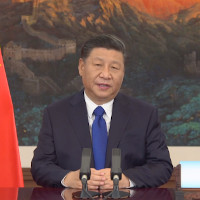
UN Moves Forward with Paris Climate Agreement
View the page for this story
The coronavirus pandemic has postponed the key 2020 UN climate Conference of the Parties (COP 26, but the vital work of ramping up international ambition to face the climate crisis must go on. So led by China’s bold pledge of more ambition, 70 world leaders and heads of state convened for a virtual “Climate Ambition Summit,” with nations that have ramped up their initial pledges made during the 2015 Paris Climate talks. The US was not invited, nor Russia, Brazil or other nations who have failed to increase their commitments to address the climate emergency. (04:45)

China’s Bold Climate Action Plan
View the page for this story
President Xi Jinping of China made some of the most ambitious pledges at the UN’s Climate Summit, promising to cut the proportion of China’s carbon dioxide emissions in its economy by two thirds over the coming decade, increase its wind and solar energy capacities to more than 1,200 gigawatts, and grow China’s forest stock, among other green targets. Ranping Song, the Developing Country Climate Action Manager for the World Resources Institute, joins Host Steve Curwood for insight on these pledges. (08:01)
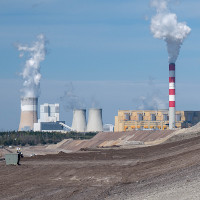
Keeping Coal from Going to the Bank
View the page for this story
French environmental activist Lucie Pinson decided that the most efficient way to stop new climate-damaging coal development wasn’t tackling projects one by one. Instead, she went straight to the big banks and underwriters who fund and insure these projects, and convinced the financiers to divest. Lucie Pinson has received the 2020 Goldman Environmental Prize for Europe for her efforts and she joins Host Steve Curwood to discuss how media campaigns that take on big finance are getting more international recognition. (08:30)

Microfiber Pollution: Note on Emerging Science: Denim
View the page for this story
New research shows that washing a pair of jeans releases up to 56,000 microfibers per wash. Microfibers are synthetic threads of fabric dyed with pigment and make their way through wastewater effluent to aquatic ecosystems. Researchers found denim microfibers in sediments along Canadian waterways as well as the digestive systems of fish. Aaron Mok reports on the study and how water pollution from denim microfibers can be prevented. (02:15)

Beyond the Headlines
/ Peter DykstraView the page for this story
In this week’s “Beyond the Headlines”, Host Steve Curwood joins Peter Dykstra of Environmental Health News to discuss how rising temperatures are disrupting the gender balance of sea turtles. Next, they discuss disinformation campaigns against solar energy in Texas, then dive into the history books to commemorate the 50th anniversary of the Clean Air Act. (05:41)

The Reindeer Chronicles: Working with Nature to Heal the Earth
View the page for this story
Environmental destruction and habitat loss can feel overwhelming, but the trend can be reversed. That’s according to environmental researcher Judith Schwartz. Her book, The Reindeer Chronicles: And Other Inspiring Stories of Working with Nature to Heal the Earth, details how people around the world are reclaiming land and helping mother nature heal herself. Judith Schwartz joins Host Paloma Beltran to talk about the restorative potential of landscapes and soils. (14:20)
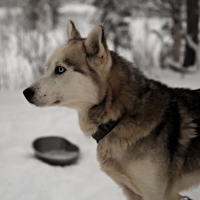
Story Time
View the page for this story
The Living on Earth holiday tradition of taking a break from the news to share some storytelling will feature traditional Native American tales and stories about human kindness towards animals. In this sneak peek, storyteller and musician Joe Bruchac of the Nulhegan Abenaki tribe shares tales of our longtime connection with dogs. (03:38)
Show Credits and Funders
Show Transcript
201218 Transcript
HOSTS: Paloma Beltran, Steve Curwood
GUESTS: Lucie Pinson, Ranping Song, Judith Schwartz
REPORTERS: Peter Dykstra, Aaron Mok
[THEME]
CURWOOD: From PRX – this is Living On Earth.
[THEME]
CURWOOD: I’m Steve Curwood.
BELTRAN: And I’m Paloma Beltran.
An urgent call for action from world leaders at a virtual climate summit.
CAPUTOVA: We have a wealth of scientific knowledge and unprecedented resources at our disposal – and yet we are creating an ecological calamity. To change the current trajectory, we need a greater climate ambition. This is not just about another number, nor about soft diplomacy.
CURWOOD: Also, helping mother nature heal herself doesn’t have to be all that difficult.
SCHWARTZ: I guess it's worth appreciating that nature wants to heal, nature wants to move to a greater state of health and abundance. So in other words we'd be working with that tendency that is already there.
CURWOOD: That and more this week on Living on Earth – Stick Around!
[NEWSBREAK MUSIC: Boards Of Canada “Zoetrope” from “In A Beautiful Place Out In The Country” (Warp Records 2000)]
[THEME]
UN Moves Forward with Paris Climate Agreement
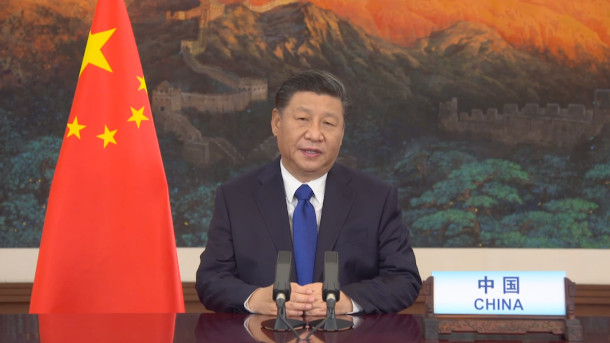
President Xi Jinping spoke at the United Nations Climate Ambition Summit and pledged to reduce China’s carbon intensity over 65% by 2030. (Photo: Screenshot of UN Climate Summit)
CURWOOD: From PRX and the Jennifer and Ted Stanley Studios at the University of Massachusetts Boston, this is Living on Earth. I’m Steve Curwood.
BELTRAN: And I’m Paloma Beltran. The annual UN climate meetings scheduled to take place in Glasgow at COP26 this year were postponed until next year due to the coronavirus pandemic. But the important work of ramping up international ambition on climate must go on, as the Paris Climate Accord turns five. So despite a year full of challenges and limitations 70 world leaders and heads of state convened for a virtual “Climate Ambition Summit” co-hosted by the UN, UK and France. And the goal of the summit was to highlight the increased commitments nations made beyond their initial pledges during the 2015 Paris Climate talks to keep the rise of global temperatures below 2 degrees Celsius. Since this was a virtual event climate activists weren’t able to gather in numbers but made themselves heard in a film shown at the summit.
[MUSIC]
WWF Clip 1: It’s not the time for a concept anymore, this is the time for a real action. I think everybody now needs to work together to fight climate change, we can't pass the blame on to others. It is vital for us to be able to continue this fight and to actually accomplish our goal which is to save the planet.
BELTRAN: China led ambition with perhaps the biggest leap in commitments by promising to create renewable energy sources equal to 1,000 of the biggest coal plants and achieve carbon neutrality by the year 2060. We’ll have more about China’s bid for climate leadership later in the program. By contrast the second largest carbon polluter on the planet, the United States, was not invited to the summit since it said it would leave the Paris Climate Agreement four years ago even though the carbon footprint of the average American is twice as large as that of a Chinese or European citizen.
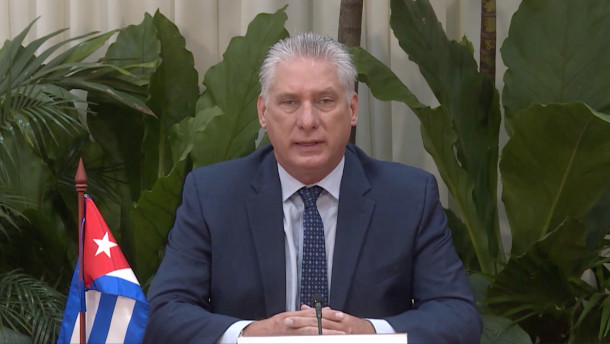
The President of Cuba, Miguel Díaz-Canel Bermúdez, called on developed nations to take leadership in reducing carbon emissions and lending out a helping hand to vulnerable nations. (Photo: Screenshot of UN Climate Summit)
President elect Joe Biden has already pledged to rejoin the Paris Agreement and set America on course to achieve climate neutrality by 2050. And Mr. Biden has also promised to host a US climate summit within the first 100 days of his presidency.
Speaking through a translator during the virtual summit last week, Cuban President Diaz Canel Bermudez said the climate emergency requires economic reforms.
DIAZ: It is necessary to emphasize that capitalist production and consumption patterns are irrational and unsustainable. Climate change and the crisis caused by the COVID-19 pandemic are crying out for an increased international cooperation. Let’s stop compromising human survival with our irrational selfishness. We are all facing the same threat.
BELTRAN: President Diaz committed to generating 24% of Cuba’s energy from renewable sources by the year 2030 and pledged to cut in half the amount of fossil fuels used in road vehicles. The climate emergency is already here now. And deadly for Central America. The leaders of Honduras and Guatemala talked about how hurricanes including Mitch in 1998, and Eta and Iota just this year left a path of devastation and thousands dead or homeless. From further South in the Caribbean Barbados Prime Minister Mia Mottley also spoke up for the most vulnerable.
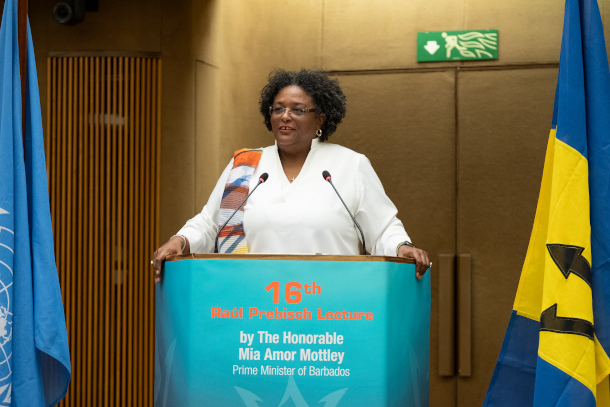
Mia Mottley is the Prime Minister of Barbados and leader of the Barbados Labour Project. (Photo: Timothy Sullivan, UNCTAD)
MOTTLEY: Frankly, at the global level, we need to move from placatory rhetoric to real effective action, or numerous nations across the world will be robbed of their future. I would like to believe that the major emitters are not capable of what would in essence, be close to climate genocide. I’d like to believe that we are visible, and indispensable for them.
BELTRAN: Zuzana Čaputová is President of Slovakia and Europe’s 2016 Goldman Environmental Prize winner.

President of Slovakia, Zuzana Čaputová, referred to climate action as an investment for future generations and pledged to reach carbon neutrality by 2050. (Photo: Screenshot of UN Climate Summit)
CAPUTOVA: We have a wealth of scientific knowledge and unprecedented resources at our disposal – and yet we are creating an ecological calamity. To change the current trajectory, we need a greater climate ambition. This is not just about another number, nor about soft diplomacy.
BELTRAN: Ali Bongo Ondimba President of Gabon is Chair of the African group of negotiators.
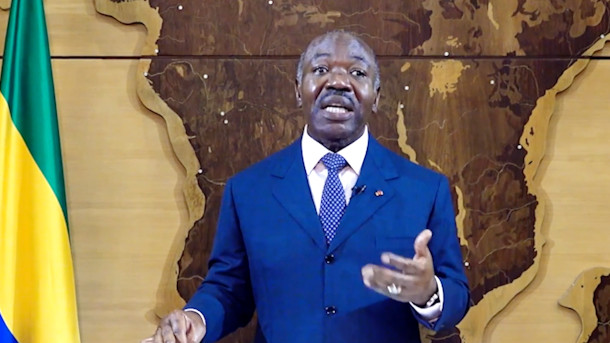
Ali Bongo Ondimba, President of the Gabonese Republic and chair of the African Climate Group of Negotiators, highlighted that Africa emits only around 4% of global emissions but is strongly committed to revising their commitments to the 2015 Paris Agreements before COP26 in 2021. (Photo: Screenshot of UN Climate Summit)
BONGO: As champion of the African adaptation initiative, it gives me hope that we can come together in the face of climate change, a threat far more significant than COVID-19. Adaptation is a key priority for our continent.
BELTRAN: The President of Denmark Metta Fredricksen went straight to the point.
METTE: We made a promise in Paris. The children of the world trust that we will keep it.
Related links:
- Click here to watch videos of the individual speeches during the 2020 Climate Ambition Summit
- Click here to watch the complete Climate Ambition Summit
China’s Bold Climate Action Plan
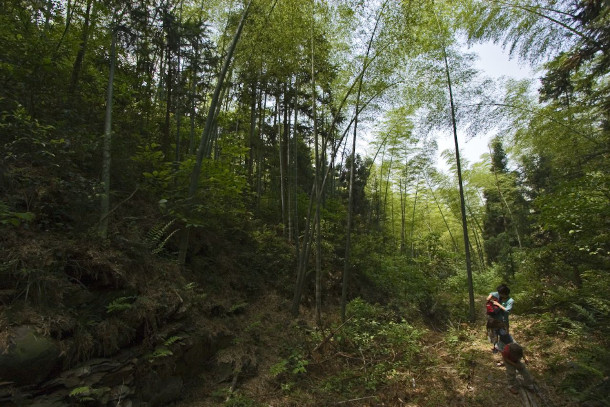
One of President Xi’s pledges involves increasing China’s forest stock by 6 billion cubic meters, as compared to their 2005 levels. (Photo: Yunastic, Flickr, CC BY-NC-ND 2.0)
CURWOOD: Now turning back to China, the boldest commitments unveiled at the Climate Ambition Summit came from President Xi Jinping. He promised to cut the CO2 intensity in China’s economy by two thirds over the coming decade, and at the same time increase China’s wind and solar energy capacities to more than 1,200 gigawatts. President Xi also pledged to add six billion tons of wood to China’s forests and achieve carbon neutrality by 2060. For more insight we turn now to Ranping Song, the Developing Country Climate Action Manager for the World Resources Institute. He’s on the line now from New York City. Ranping – welcome to Living on Earth!
SONG: Thank you.
CURWOOD: Now some folks say that China could in fact, stop increasing its emissions as soon as two or three years from today. How accurate is that perception?
SONG: I think there's merit to that analysis. And we believe that you know, what China announced as a target is the modest down payment for the country out towards the long term vision. But definitely the country could do more. Our own analysis indicates that stabilized carbon emissions could happen as soon as 2023. And then emission can be peaked as early as 2026. And then the carbon intensity reduction in 2030, can go all the way to 73%. But then, having that in the context; in the 2020 target, China already beat its own targets by 3% points by the end of this year. So, China actually has a record of beating its own targets, so China could do more. But then I think that China still has opportunities and has a potential to do more.
CURWOOD: Talk to me about the cultural part here, it seems to me that in China, they'd rather have a lower target that they exceed, than come in short.
SONG: Yeah, I think this is part of their expectation management. You want to outperform your expectation to impress people, of course, and that's also part of the current culture, right? So, it's always leaning towards the conservative, rather than maximize your potential. What's important here is the government sending the signal to the country that you know, this is the way to go. Long term, the destination is clear, it has to go to net zero emissions by 2060. And hopefully, that will be a clear and loud message to you know, companies and then provincial and city officials and residents and consumers. And that will drive change.
CURWOOD: So, China has twice the emissions now of the United States. And the other major emitters combined kind of equal China, how important is it for China to get support from other countries at this stage to keep advancing things?
SONG: China actually is not asking for a lot of direct money to go into the country to support its low carbon vision, they are motivated by the country's own aspiration, because they understand this is their economic future. They understand that this is the way that to become the economic powerhouse. So, they're not asking for money, per se, to realize that, but they're asking for the world to become more cooperative, you know, in terms of technology, in terms of global trade. So we can work together to achieve that end goal, rather than you know, isolated, you know, different countries doing its own thing. So I think that China is actually looking forward to more international cooperation, but then they are not asking for direct financing.
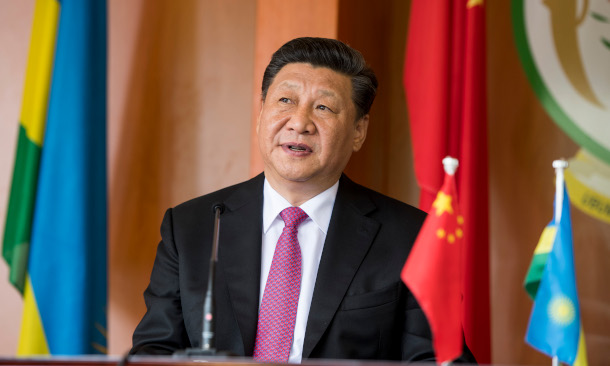
China’s first public declaration of its intent to reach carbon neutrality by 2060 was made by President Xi Jinping in October of 2020. (Photo: Paul Kagame, Flickr, CC BY-NC-ND 2.0)
CURWOOD: When we talk about reducing emissions, we're most often looking at sort of industrial processes that generate CO2, but the loss of forests around the world is equal to about a third of the current emissions these days. What do you make of President Xi's commitment to protect forests in China? How big a commitment is that?
SONG: I think that's along the line of what the country wants to see going forward. So as part of China's so-called Beautiful China vision, they want to see that the country's become a very environmentally friendly society that you know, people get to enjoy. There's actually there's a lot of area that China was trying to do restoration efforts, northwest of Beijing. So the 6 billion cubic meters increase of forest stock from '05 levels, is more or less in line with what the country is going towards for its domestic agenda.
CURWOOD: So, President Xi talked about carbon dioxide, what about the other greenhouse gases that are pretty powerful? I'm thinking methane, and then there's some nitrogen compounds. And then there's some small but really potent industrial compounds as well.
SONG: Yes, I'm really glad that you asked, because those so-called non-CO2 gases are actually a very significant part of China's emission, it's around 16%. It's small compared to the CO2. If those emissions were country alone, it will be the seventh emission parties, equal in size with Germany or Brazil, actually. So, many of those sources have real low-cost mitigation measures China can take. At the same time, they can, you know, help to improve the air quality, to help to improve the economics of many of those industries. We are not seeing that at the moment for China's announcement, but we are hopeful that China will take action and hopefully will add those targets. Especially if China wants to go to net zero all the way by 2060, then these emissions need to be addressed and mitigated early on.
CURWOOD: So, talk to me about the various the provinces in China there, there are some 23 and some, of course, are far more advanced in an industrial economy than others. How has President Xi and his team set the targets for reaching carbon neutrality with those various provinces?

Ranping Song is the Developing Country Climate Action Manager for the World Resources Institute. (Photo: Courtesy of the World Resources Institute)
SONG: Because the carbon neutrality is recently announced as a national target, there's no provincial target yet, except for Hong Kong committed to go to carbon neutral by 2050. But then around 73% provinces or cities have already set their emission peaking targets, and usually earlier than the national targets. So, that is a really good and hopeful sign. And then also, I think it's really important to see that, you know, usually the more economic developed regions, the provinces and cities, they're more willing to take ambitious action, just because they see this as a way for them to grow the economy. And once they did that, it will provide a greater sense of momentum and competition, because all the provinces want to see their own jurisdiction to become more developed places, like, you know, in Beijing, in Shanghai. So that will become a very powerful pull from the rest of the provinces to commit to a more ambitious target over time.
CURWOOD: The Paris process of having each country determine its own commitments of reduction, some people call the naming and shaming approach, how effective in the long term do you think this is going to be, to keep us from falling far deeper than we can handle into the climate emergency?
SONG: I think they will have some merit. We have some reputation race, definitely plays some role in country's decision on what to do. But again, the Paris Agreement is about opportunities. It's about enlightening countries to realize its economic and social development. So, it's not about you know, if you don't do this, shame on you, although there may be some element of that. But then the most important question is how to make sure you understand this is good for your economy, good for your, sort of benefits, good for jobs, good for your health. And for that reason alone, that's enough for you to do something and then to transform the world to net zero emission trajectory, and then realize the Paris Agreement goals. So, it may not sound very intuitive from the get go. But then we are seeing that's the only way to work, because we don't have an effective mechanism to punish countries for not doing something. And the only thing that we can move countries to do is make them understand this is for their own sake.
CURWOOD: Ranping Song is the World Resources Institute Developing Country Climate Action Manager, Ranping, thanks so much for taking the time with us today.
SONG: Thank you, Steve.
Related links:
- The World Resources Institute
- The World Resources Institute | “Accelerating the Net-Zero Transition: Strategic Action for China’s 14th Five-Year Plan”
- More on Ranping Song
MUSIC: Nubiyan Twist, “Buckle Up” Strut Records]
BELTRAN: Coming up – how to stop billions of dollars of coal-related development.
ANNOUNCER: Support for Living on Earth comes from Sailors for the Sea and Oceana. Helping boaters race clean, sail green and protect the seas they love. More information at sailors for the sea dot org.
[CUTAWAY MUSIC: Childsplay, “Kuivatusaluevalssi” on Heaven & Earth, by Tapani Varis, Childsplay Music]
Keeping Coal from Going to the Bank
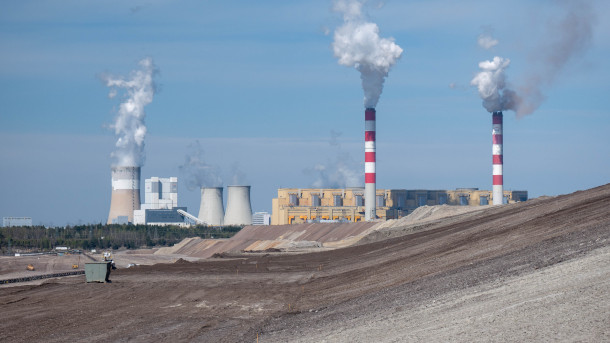
Banks and insurance agencies pour billions into coal projects each year. (Photo: Roman Ranniew, Flickr, CC BY 2.0)
BELTRAN: It’s Living on Earth. I’m Paloma Beltran
CURWOOD: And I’m Steve Curwood.
At the virtual climate summit French president Emmanuel Macron emphasized his country’s commitment to tackling climate change by addressing climate culpability in the financial sector. That’s been the same approach of French environmental activist Lucie Pinson, who won a Goldman Environmental Prize for her work stopping new coal development. The coal industry needs loans and insurance to operate, and she convinced some of the biggest banks and underwriters to divest. Lucie Pinson joins me now on the line from Paris. Welcome to Living on Earth!
PINSON: Thank you.
CURWOOD: So you helped convince some of France's largest banks to divest from financing coal. Why did you feel change could be made by going after the financial sector?
PINSON: So you need to understand that behind each project or each company, you will find some banks, you will find some insurance companies and some investment companies. So, mathematically, it might be very meaningful to target the financial institutions, instead of targeting the projects or the companies directly. You will find thousands of projects that are being in development and that needs to be stopped. And you will find only dozens of banks and investors and insurance companies. So, it might be much quicker to go to who is financing them than to target each project one after another.
CURWOOD: Yeah, so give me some numbers. I mean, what kind of financial levels are we talking about here?
PINSON: You will find like the projects we are talking about might cost several billions of dollars. And you will find that sadly, after COP 21, finance kept pouring into the financial sector. So for example, from 2017 to 2019, the global banks provided $745 billion to companies that are planning new coal plants.
CURWOOD: So we have to start somewhere. Where did you start on this?

Lucie Pinson is the 2020 Goldman Environmental Prize winner for Europe. (Photo: Courtesy of Reclaim Finance)
PINSON: We knew already that the French banks had been financing some new coal plants worldwide, and were actually among the top financers of the coal industry globally. For example, I was living just before in South Africa, and the French banks had been the one financing two massive coal projects there, the Kusile and Medupi coal plants that are responsible for pollutions of water and the air and violation of human rights. So we started targeting banks financing to such kind of projects. My first fight was against Societe Generale's advisory mandate to a new coal mine in Australia.
CURWOOD: So Soc Gen as the people in the finance world call that company, is a ginormous bank, how did you get them to let go of that particular coal project?
PINSON: So we did a lot of study about the project itself, we need to think in data. Banks usually think in terms of very short term, and they think in terms of financial and economic profitability. And we also brought some numbers to them. But the numbers were based on the human reality behind these projects, we spoke about massive impacts in terms of biodiversity considering the coal was planned to be exported through the Great Barrier Reef. We told them very clearly that if they want to maintain the support, they will be depicted as responsible for climate the cost was during COP 21 that was going to be hosted in France. We were also building up a power relationship publicly, moving the balance of power to our own advantage, pushing them to either withdraw from the project, or admit publicly that they didn't care at all.
CURWOOD: What kind of research did you have to do to get your campaign going, because clearly, just a few of you walking into Societe Generale is not gonna move the needle?
PINSON: So it was very difficult at the beginning, because in France, coal is not part of the energy mix. So even if French banks were among the biggest bankers behind the coal sector worldwide, it wasn't a reality known and understood by the French population. We clearly had to also educate and raise awareness about the importance for French people to make our bank accountable for the financing and the impacts of their financing worldwide. And also telling them that it will have an impact on everyone, like climate change does impact everyone at the end of the of the day. And something great about activism is that when you push one bank to withdrew from one project, I mean, the reaction of an activist is not okay, I'm going home now. It will be more. Okay, what's next? What is the next fight?
CURWOOD: What are some of the most effective ways you found to educate people about coal financing and why they should care?
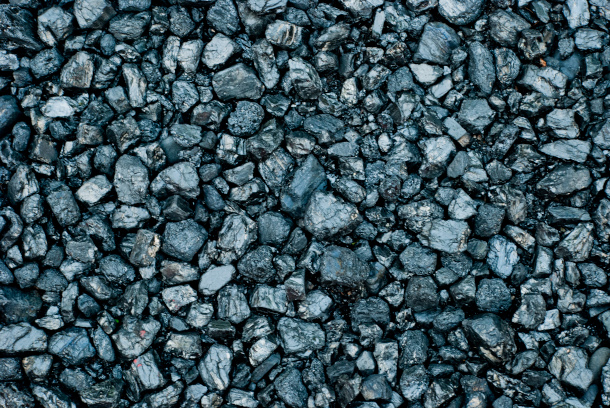
Lucie Pinson preferred convincing banks to divest from fossil fuels, rather than trying to stop individual coal development projects one at a time. (Photo: bartb_pt, Flickr, CC BY-NC-ND 2.0)
PINSON: The fight against coal originally is not a fight against climate. It's first of all, a fight against human rights violations. Behind such big projects, you have people being impacted. You have corruption. That's why coal is really a good case. Coal is not only the biggest source of greenhouse gas emissions, it's also killing a lot of people every year. It's 800,000 people that have died because of the pollution caused by the coal sector. We do a lot of research. And we also work in a broad network. So with a lot of organization on the ground where coal is being mined or burned, every year, we bring to communities, frontline communities, to send I mean our colleagues from mine. But we also organize what we call speakers, where they come in France, where they can directly talk about the reality of the court sector, but they will also meet a lot of activists when they come to France. So it's also a way to build a solidarity and awareness. So we show them that behind numbers, women and men that are deeply impacted by what we oppose.
CURWOOD: How do you think the US could use an organization like Reclaim Finance to deal with the climate emergency?
PINSON: It's very important to support organizations that are working on the financial sector. So you can look at run, for example, the Rainforest Action Network and support the campaign, I think it's really important also to get involved in campaigns such as Stop The Money Pipeline campaigns, that is really putting a lot of pressure on the finance industry in the US. And there is a lot to be done, looking at JP Morgan Chase or Black Rock that are really today supporting the expansion of the coal sector, also Liberty Mutual, which is being targeted by your campaign name Insure our Future. Then at the individual level, we can also obviously, we all have a bank, we have an insurance company, and these give us the power to have a war with them, and to say I don't want you to use my money to finance such activity. So it’s important to reclaim the power on what banks are doing with your money. Maybe one thing that is important through this prize is that all of us have reasons to think that alone we cannot do anything. We are too tiny. We don't have decision making power. What can I do? But these kind of arguments are the reason why we are today going towards climate chaos. I'm very convinced that we can win the climate war, but it needs everyone to put into channel its energy into the world of finance, no matter where they come from, and no matter what they do in life, we all have a role to play. We will have a lot of failures, but it's fine because after many failures, there is always a success in front of us.
CURWOOD: Lucie Pinson is the 2020 Goldman Environmental Prize winner for Europe. Lucy thanks so much for taking the time with us today.
PINSON: Thanks a lot Steve.
CURWOOD: We called and emailed each of the US financial institutions that Lucie mentioned but none of them got back to us in time for our broadcast.
Related links:
- More about Pinson’s grassroots organization Reclaim Finance
- Read more about Lucie Pinson
- Meet the other 2020 Goldman Environmental Prize winners
[MUSIC: Benny Sings, “Sunny Afternoon” Stones Throw Records]
BELTRAN: Just ahead, tapping into indigenous knowledge to help heal Mother Earth but first this note on emerging science from Aaron Mok.
Microfiber Pollution: Note on Emerging Science: Denim

Denim microfibers were found to dye wastewater discharge blue, and are ingested by rainbow smelt fish. (Photo: Noirathsi’s Eye, Flickr, CC BY-NC 2.0)
[SCIENCE NOTE THEME]
MOK: Denim is one of the most widely worn fabrics in the world. But it can have a huge environmental cost.
A recent study published in the journal Environmental Science & Technology Letters shows that each washing of a single pair of jeans can release up to 56,000 denim microfibers, those are tiny cotton threads encased with chemical additives, including indigo dye. From washing machines, those microfibers make their way through the sewage system. And then they are frequently discharged into aquatic ecosystems where they can wreak havoc on the environment.
To learn more, researchers sampled sediments from the Canadian Arctic Archipelago, the American Great Lakes, and shallow suburban lakes in southern Ontario.
The findings were striking. More than 90 percent of anthropogenic particles lodged in sediments in Canadian waters contained microfibers. And more than half of those microfiber particles came from denim dyed with indigo.
Researchers also found that roughly 13 percent of the effluent from a wastewater treatment plant in Southern Ontario contained denim microfibers which actually dyed the discharge blue. Denim microfibers were also discovered in the digestive tracts of rainbow smelt fish where they have the potential to cause cell damage, inflammation, and even death by starvation.
Researchers washed jeans in controlled trials to measure the amount of microfibers released into the environment. They found that a new pair of blue jeans releases significantly more microfibers than used jeans, and that the initial wash of a fresh pair releases the most.
So, to reduce the amount of denim microfibers entering waterways, scientists encourage consumers to check thrift stores for previously owned jeans, wash their jeans only when necessary and use washing machine filters that can trap microfibers before they enter the environment.
That’s this week’s note on Emerging Science. I’m Aaron Mok.
Related links:
- Environmental Science And Technology Letters | “The Widespread Environmental Footprint of Indigo Denim Microfibers From Blue Jeans”
- Smithsonian Magazine | “Microfibers from Blue Jeans Are Polluting Arctic Oceans”
[SCIENCE NOTE THEME]
Beyond the Headlines
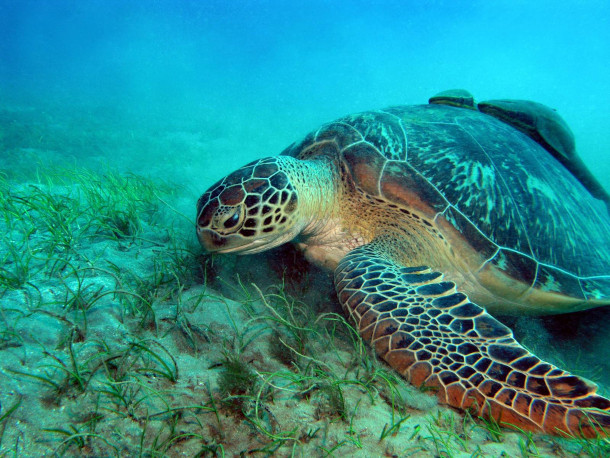
Scientists find that some sea turtle communities nesting along the Red Sea only produce females as a result of a rise in sand temperatures. (Photo: Frank_am_Main, Flickr, CC BY-SA 2.0)
CURWOOD: Well, it's time now for us to take a look beyond the headlines with Peter Dykstra. Peter is an editor with Environmental Health News as EHN.org and DailyClimate.org, and he's on the line now from Atlanta. Hey, Peter, what do you have for us this week?
DYKSTRA: Oh, hi, Steve. Got a little bad news from a journal called Conservation Science And Practice. They studied sea turtle nests, loggerhead turtles, hawksbill turtles all nest around the Red Sea. And with each species, including the ones that are most threatened or endangered, there are some nesting populations that produce only female sea turtles.
CURWOOD: Oh, this I imagine has to do with rising temperatures there? Because of course, whether a turtle is born male or female depends on the temperature of their nest during incubation.
DYKSTRA: That's right. And of course, that nest is in the sand, not in the sea. Sand that's about 85 degrees Fahrenheit is considered to be optimum for sea turtles. Once you get above that number, and the higher you go, the ratio of female turtles to male becomes much higher. There's some beaches around the Red Sea, where the sand has measured at 97 degrees Fahrenheit. The study has been replicated in places like Florida, and in an island off Australia. If those beaches continue to get hotter and hotter, it could be a mortal threat to some of the coolest animals in the ocean and on Earth. My favorite are leatherback turtles, enormous with not hard shells, but sort of leathery shells. And to me, they always look like giant Volkswagens swimming in the ocean.
CURWOOD: And when they occasionally come ashore to lay those eggs. What else do you have for us this week?
DYKSTRA: Well, solar energy is hitting growth spurts all over the United States, all over the world in some places. But there's a story out of Texas that focuses on how as solar grows, disinformation about solar grows.
CURWOOD: So wait, how can you have misinformation about solar? Is there something toxic about the sun or what do they claim?
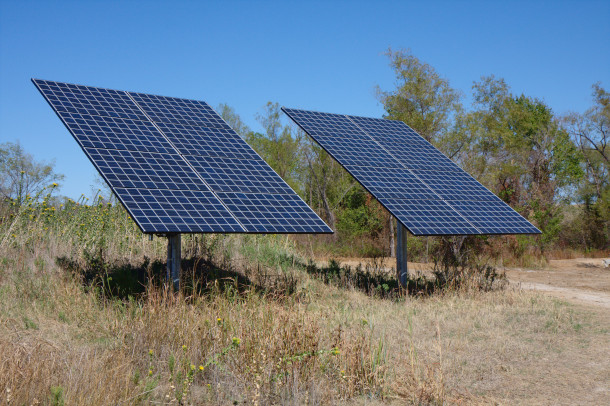
Disinformation campaigns on the dangers of solar are on the rise as more solar panels are installed across Texas. (Photo: Steve Rainwater, Flickr, CC BY-SA 2.0)
DYKSTRA: Not toxic about the sun, but there are some toxic materials in solar panels. Those panels typically might last 30 or 40 years, when the substances in them begin to break down. Critics of solar energy are pointing out that these panels can be torn asunder by hurricanes along the Texas coast. They can otherwise just degrade. And critics claim that it leaves a toxic mess. Of course, the information that those critics base things on are coming from astroturf groups. They appear to be grassroots, but they're actually born in industry planning rooms and PR firms. One is called Citizens for Responsible Solar, another is the Foundation for Economic Education, and the Institute for Energy Research, all of which are think tanks funded by people like Charles Koch, and the Heartland Institute, one of the primary think tanks for climate denial. Yeah, there will be a challenge to deal with some of the toxics that are in solar panels. But it's hardly a reason not to convert to cleaner energy than anything we would get from fossil fuels.
CURWOOD: So now that we're in the point in our conversation where we turn to the history books, Peter, and I'm wondering what you want to talk to us about today?
DYKSTRA: We'll go back 50 years of late December of 1970. Congress passed and President Nixon signed the Clean Air Act. It's a monumental law that helped smoky cities like Pittsburgh, come out of some very, very dangerous and unhealthy situations. The Clean Air Act was further strengthened in 1977 when Jimmy Carter was president. And in 1990 and 91 when George H.W Bush, the older Bush, was president. It controls acid rain, it controls mercury emissions, smog, soot, many of the things that cause some serious health problems in the lungs of Americans from coast to coast.
CURWOOD: Give me some measures of its effectiveness, this bipartisan effort back 50 years ago to have a Clean Air Act.
DYKSTRA: A study done by the Environmental Defense Fund back during the Obama administration estimated that 4.2 million lives have been extended or saved by the rules and regulations of the Clean Air Act. And in 2012, an EPA estimate put the prevented deaths at about 184,000 a year. That same estimate put the savings to Americans at $22 trillion saved mostly in insurance and health care costs, the reduction of missed work times, and so many other things that are occasioned by heart disease, heart attacks, asthma and all of the respiratory diseases that the Clean Air Act was designed to help reduce. It's 50 years later, and it seems to be working.
CURWOOD: And of course thanks to the Supreme Court the Clean Air Act now allows the EPA to regulate the global warming gas CO2 as a pollutant. Peter Dykstra is an editor with Environmental Health News as ehn.org and daily climate.org. We'll talk to you again after the holidays, Peter. Happy holidays!
DYKSTRA: After the holidays and in the year everyone's been waiting for lately, 2021. Will talk to you then.
CURWOOD: And there's more of these stories on the Living On Earth webpage. That's loe.org.
Related links:
- Conservation Science and Practice Journal | “Potential Feminization of Red Sea Turtle Hatchlings as Indicated by In Situ Sand Temperature Profiles”
- Texas Observer | “Solar Energy Is Hitting a Growth Spurt. So Is the Disinformation Around It”
- Grist | “Solar Panels Are Starting to Die. What Will We Do with the Megatons of Toxic Trash?”
- Environmental Defense Fund | “Saving Lives and Reducing Health Care Costs: How Clean Air Act Rules Benefit the Nation”
[MUSIC: Seb Zilner, “What If We Met” PLYGRND]
BELTRAN: Coming up – the Reindeer Chronicles, stories of restoring nature. That’s just ahead on Living on Earth.
ANNOUNCER: Funding for Living on Earth comes from you, our listeners, and United Technologies, combining passion for science with engineering to create solutions designed for sustainability in aerospace, building industries, and food refrigeration.
[CUTAWAY MUSIC: Seb Zilner, “What If We Met” PLYGRND]
The Reindeer Chronicles: Working with Nature to Heal the Earth

A protest in front of the Norwegian Parliament. In the background is an art piece consisting of 400 reindeer skulls, created by Màret Ánne Sara. (Photo: Astrid Carlsen (WMNO), Wikimedia Commons, CC-BY 4.0)
CURWOOD: It’s Living on Earth, I’m Steve Curwood.
BELTRAN: And I’m Paloma Beltran.
Environmental destruction and habitat loss can feel overwhelming but the trend can be reversed. That’s according to environmental researcher Judith Schwartz. Her book, The Reindeer Chronicles: And Other Inspiring Stories of Working with Nature to Heal the Earth, details how people around the world are reclaiming land and helping mother nature. The book’s title is inspired by a case from Norway where the native Sami people still herd reindeer just as they have for generations. The Norwegian government claimed the reindeer hurt the delicate tundra ecosystem, seen by many as a convenient excuse to remove the Sami people and access the rich mineral deposits beneath their land. But that claim contradicted indigenous knowledge about the important relationship between reindeer and their frigid habitat. For more I’m joined now by Judith Schwartz, welcome to Living on Earth!
SCHWARTZ: Thank you, Yeah, so this is a case that speaks to the importance of indigenous knowledge. So, you know, for thousands of years, Sámi reindeer herders have been moving their animals across the far north, and they have summer terrain, and then they have winter areas. So they move the animals to different spots depending on the season. So the Norwegian government was operating on the assumption that, "well, if there are more animals, well, you know, that's bad for the environment. So we need to ask or demand that these reindeer herders lower the numbers of reindeer." But the truth is that the way that the Sámi herders have been managing their animals, in fact, helps to maintain the tundra ecosystem. So here's how it works. So with the summer herding, the reindeer are browsing, they are nibbling at shrubs and small trees. And the reason that that's important is that the native heath, the kind of grassy areas that has a higher albedo, which means that it reflects the heat. However, these shrubs and trees, they have a lower albedo, which means they retain the heat. And you know, when they get established, that can heat up a whole microclimate. Okay, so that is adding heat to the landscape. But because the reindeer are nibbling at those plants, they're keeping them in check, so that they don't have that heating impact. And in the winter, the reindeer in large numbers are moving across the snow, and their hooves are pressing down the snowpack. And while that initially sounds like a negative thing, that Oh, no, the beautiful snow there, you know, they're messing that up. Actually, the snow had been acting as an insulator. So it was keeping the cold away from the, it was protecting the soil from the deep chill. But when the reindeer press down the snow, that means that the soil stays frozen, the permafrost stays frosty, so they are maintaining the cold. And that is important, especially in an area near the poles that is warming faster than other parts of the world. And research was done that found that, I think the research was done in Siberia, the way north of Siberia, that areas that had herbivores, plant eating animals on them in the winter, stayed colder, significantly colder than areas that had no animals on them. So often the assumption is that animals are harming the landscape. But we need to ask questions of landscapes that have always had animals on them, and what is the function of the animals in that environment?

Another art instillation of reindeer skulls, this one by Sami arts activist Máret Ánnesara. (Photo: Heinz Bunse, Flickr, CC BY-SA 2.0)
BELTRAN: Definitely. And I mean, currently, the Sámi people are still struggling to keep their rights. Could you tell us a little bit more about what they're dealing with right now?
SCHWARTZ: Yeah, it's actually a huge challenge in that the area that the Sámi live, happens to be an area with great mineral wealth, and also an area that would give businesses access to energy resources. And it's also attractive for hydro power. So there is tremendous pressure on these people to give up the rights to their land. Or kind of open the door a little bit. And we know that when you open the door a little bit, then you know, your rights begin to erode. And that can happen very quickly. People I know in that region are really concerned about this.
BELTRAN: So by now we are well aware that enormous chunks of the Earth's environments have fallen barren, in large part to human industry. But in your book, you show how feasible It is, in many cases to restore biodiversity to devastated regions. What are the physical steps to achieve environmental restoration and how does it work?
SCHWARTZ: All right, well, the important thing to know is that all of our ecosystems are always in the process of change. So you have forested areas that are shifting between one level of succession to the next, everything is always in process because that's how nature works. So we can work with natural processes to repair ecosystems. So in the most basic sense, what you want to do when you have an area that is no longer functioning, no longer thriving, is to build biodiversity, build biomass, which is the amount of plant material and build soil organic matter. That is kind of the formula, because that is how our healthy ecosystems evolved through, over long, long periods of time. But working with natural processes, we can certainly nudge our landscapes in the right direction. And depending on where you are, it doesn't even necessarily take that long a time.

A Sami woman smiles at a reindeer. (Photo: charclam, Flickr, CC BY-NC-ND 2.0)
BELTRAN: Yeah, there definitely seems to be a lot of misunderstanding about how soil works, right. And there's a chapter in your book where you talk about female action, you form part of a group of women who wanted to learn how to be ranchers. And I found it fascinating that you talked about the connection to the land, how some woman might experience a stronger connection to soil than others sort of driving this movement. Could you maybe tell us a little bit more about that, and do you feel this strong connection to the land?
SCHWARTZ: Yeah, yeah. So when I wrote a book about soil, and I talked about it with other women, I was surprised by just how they kind of brightened up and they said, "Oh, my gosh, nothing makes me happier than having my hands in the soil," or they remember their childhood and how they played with plants and animals, but it was about a visceral connection to the soil. And in truth, I didn't originally have that, I came to an appreciation of soil through looking at how ecology works, and what the potential for restoring soil is. But I'm certainly learning and I'm certainly enjoying gardening. And I certainly enjoy looking at critters in the soil. So there is something, and actually when I do so, it brings back a kind of childhood sense of exploration and just that tactile, enjoyment of just being in a place. I just find that there are so many women that are doing this work, that have an intuitive connection to how everything links together, just a kind of like they get it immediately. And it was really exciting when I went to the new cowgirl camp in eastern Washington State. And there were a bunch of us all together that could just sort of be soil nerds and be animal nerds and talk about different breeds of sheep, and, you know, we can all laugh together and how silly these animals are, and it was really a wonderful thing. And what impressed me so much was that many young women just, they just felt so empowered about the notion of buying a ranch and managing animals, when I can tell you for certain that when I was in my 20s, I would never have thought that that was even within the realm of possibility. But it can be done. And that's the thing. We had sheep on our property a couple of years ago. And it just seeing those animals being around them learning their personalities, was so much more meaningful to me than I ever would have guessed.
BELTRAN: There's like no way of putting an actual economic value for our interaction with nature, right?
SCHWARTZ: That's true. And a lot of people I know, do this work on a shoestring and yet are among the most fulfilled, happy and engaged and optimistic people that I know, because they are doing what they love. And there is really nothing like being connected to landscape.
BELTRAN: Could you maybe talk about some of the problems in your book that you encountered or some of the problems that people were experiencing? that had to do with environmental restoration?
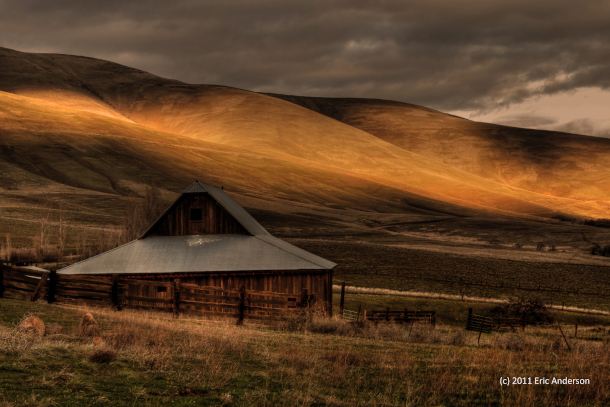
Dales Mountain Ranch in Washington, near the Colombia Gorge. (Photo: Unsettler/Eric Anderson, Flickr, CC BY-ND 2.0)
SCHWARTZ: As I was exploring in my own reporting many different ecological challenges and how they could be addressed, I kind of fell into the trap of thinking that all we needed was to know the science, all we needed was to know the techniques, the right way to do agriculture that would be regenerative as opposed to degenerative, and all of these different wonderful ways of restoring the watercycle etc. I thought that all we needed was just that knowledge, but when you come back to it, environmental problems are really people problems, in that it reflects the way that people have been managing these landscapes, often looking to extract value without kind of holding on to the the basic elements that provide function and value. So what I saw many times were challenges among people, communities that had a hard time working together, because each different groups within the community didn't understand what the other groups were doing. And in fact, in my reporting, I was able to, to observe an incredible episode where groups that had been in tremendous conflict were able to come to an agreement on how to work on their land. And also, sometimes the human side of where we get stuck relates to the legacy of industrial agriculture or the legacy of colonialism.
BELTRAN: Most people would think of restoration as a hard and slow process. But in your book, could you describe that once a project reaches a certain point, biodiversity is able to come back pretty quickly! Why do you think we lack an understanding on how biodiversity restoration works, and how is it able to come back so rapidly?
SCHWARTZ: Well, I guess it's worth appreciating that nature wants to heal. Nature wants to move towards a state of greater health and abundance. So in other words, we'd be working with that tendency that is already there. As for why we don't know this is possible, I think that we often kind of look from a problem standpoint that we kind of go along in thinking that things have always been the way they look to us right now, and then when something goes wrong, we react and try to scramble to solve a problem without necessarily really understanding the conditions that created that healthy landscape in the first place. Environmental restoration represents a huge opportunity. And I think we've missed opportunities in the past, when we have looked at climate as a matter of technology and the atmosphere, as opposed to understanding that what's in the atmosphere has moved through the ground and cycled through the ground as well. And by focusing on what we can do on the ground, by restoring our soil, rebuilding organic matter, drawing down carbon from the atmosphere, into the soil and vegetation, we have just so many possibilities that we've so far neglected. But we don't have to keep neglecting that, and I would say that there are signs that people are realizing that this is a very meaningful and, you know, optimistic way to go.
BELTRAN: Judy Schwartz is the author of the Reindeer Chronicles and Other Inspiring Stories of Working with Nature to Heal the Earth. Thank you for this beautiful book and conversation, Judy.
SCHWARTZ: Well thank you, my pleasure.
Related links:
- Click here for more on The Reindeer Chronicles
- Read more about protections on reindeer
- Partner.sciencenorway.no | “The Norwegian Government Ordered Massive Slaughterings of Reindeer. Indigenous Sami Reindeer Herders Disagreed But Were Not Heard.”
[MUSIC: Childsplay, “Kuivatusaluevalssi” on Heaven & Earth, by Tapani Varis, Childsplay Music]
Story Time
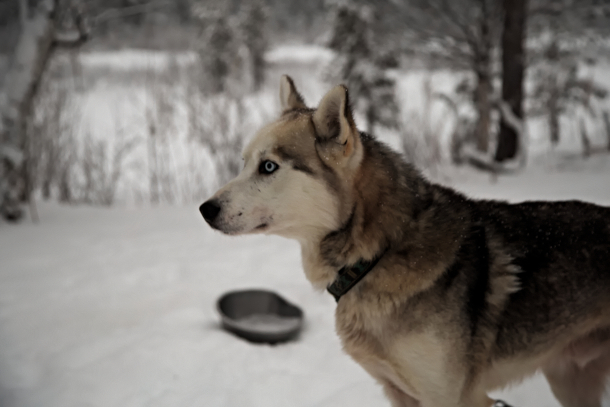
For more of Joe Bruchac’s storytelling, tune in next week. (Photo: Enrico Strocchi, Flickr, CC BY-SA 2.0)
CURWOOD: Here at Living on Earth we have a holiday tradition of taking a break from the news to share some story telling. Over the next couple weeks we’ll have stories of the winter solstice, human kindness to animals, and some traditional Native American tales. To kick it off we are going to offer a sneak peak of what we are working on with Joe Brushac. Joe is a storyteller and musician with the Nulhegan Abenaki tribe of Vermont and Upstate New York, and like many of us, a dog lover.
BRUCHAC: Yeah, the dog is a very special being. And you know, we say that we learn from every animal that each one has something to teach us. For example, the ancestor of the dog is the wolf. We say that human beings learn from the wolf such things as the fact that all of us in our community, like all the wolves in their pack should care for all the children. Or that we should be able to sing together and make music just as the wolves do. They are really beautiful creatures. One of the stories I've heard told by many different elders around the continent, is a story of the Milky Way. And it is said that there was an old wolf she was the leader of the pack. But one day, her time came to leave this earth, and she passed on. Now all of the other wolves were filled with sorrow, she was gone. How would they ever see her again? That might not be possible, perhaps there was no way and then one of the wolves looked up into the sky. And what that will saw there, made it happy. For there were footprints of a wolf leading up from the highest mountain, into the stars, deeper and deeper going into the heavens, and that was the wolf trail. The trail that old female wolf had left for the others to follow to reach the Land Beyond this, the next life, they say that exists in the stars. And so it is when we look up into the sky at the Milky Way. We call that the wolf trail. And we say that is the path, the wolves left for us as well to follow when the time comes for us to leave our bodies and go up into the sky. And by the way, there's an interesting connection here with the dog. And I've heard this told me by elders among the Hodenosoni people, I've heard this told me by John King Viejo was 100 year old elder of the Lacandon Mayan people in Central America when I was down there many decades ago. And the story is that if you look at the Milky Way, you'll see there is a place where there is a break in that river of stars. But when you reach that point, when your spirit is traveling to the next life, you have to get across that break in the star trail. And the way you get across it is said, are with the dogs that help you all the dogs you've had in your lifetime are waiting there on the other side for you. And when they see you, they will swim out into that river and grab hold of their tails with their mouths and make a bridge for you to cross to reach the other side. The way Shaun King told that he said, Well, the dogs will swim across that river of stars and protect you from the various creatures like crocodiles and Caymans that are there in the river and might drag you down. You hold on to their tails and they pull you across but if you haven't treated them well they just might not help you make that journey to the other side. So we always need to remember to treat our dogs well for your we will indeed see them again there in the river and stars.
CURWOOD: That’s Abenaki musician and story teller Joe Brushac. Please join us in the coming weeks for more stories, including some from Joe.
Related link:
Learn More About Joe Bruchac
[MUSIC: Tommy Emanuel, “Song For A Rainy Morning” on The Best of Tommysongs, CGP SOUNDS]
CURWOOD: Living on Earth is produced by the World Media Foundation. Our crew includes Naomi Arenberg, Bobby Bascomb, Jenni Doering, Jay Feinstein, Leah Jablo, Mark Seth Lender, Don Lyman, Isaac Merson, Aaron Mok, Aynsley O’Neill, Jake Rego, Casey Troost, and Jolanda Omari.
BELTRAN: Tom Tiger engineered our show. Alison Lirish Dean composed our themes. You can hear us anytime at L-O-E dot org, Apple Podcasts and Google Podcasts, and like us, please, on our Facebook page - Living on Earth. We tweet from @livingonearth. And find us on Instagram at livingonearthradio. I’m Paloma Beltran.
CURWOOD: And I’m Steve Curwood. Thanks for listening!
CURWOOD, BELTRAN: Happy Holidays!
ANNOUNCER: Funding for Living on Earth comes from you, our listeners, and from the University of Massachusetts, Boston, in association with its School for the Environment, developing the next generation of environmental leaders. And from the Grantham Foundation for the protection of the environment, supporting strategic communications and collaboration in solving the world’s most pressing environmental problems.
ANNOUNCER 2: PRX.
Living on Earth wants to hear from you!
Living on Earth
62 Calef Highway, Suite 212
Lee, NH 03861
Telephone: 617-287-4121
E-mail: comments@loe.org
Newsletter [Click here]
Donate to Living on Earth!
Living on Earth is an independent media program and relies entirely on contributions from listeners and institutions supporting public service. Please donate now to preserve an independent environmental voice.
NewsletterLiving on Earth offers a weekly delivery of the show's rundown to your mailbox. Sign up for our newsletter today!
 Sailors For The Sea: Be the change you want to sea.
Sailors For The Sea: Be the change you want to sea.
 The Grantham Foundation for the Protection of the Environment: Committed to protecting and improving the health of the global environment.
The Grantham Foundation for the Protection of the Environment: Committed to protecting and improving the health of the global environment.
 Contribute to Living on Earth and receive, as our gift to you, an archival print of one of Mark Seth Lender's extraordinary wildlife photographs. Follow the link to see Mark's current collection of photographs.
Contribute to Living on Earth and receive, as our gift to you, an archival print of one of Mark Seth Lender's extraordinary wildlife photographs. Follow the link to see Mark's current collection of photographs.
 Buy a signed copy of Mark Seth Lender's book Smeagull the Seagull & support Living on Earth
Buy a signed copy of Mark Seth Lender's book Smeagull the Seagull & support Living on Earth

